
Maybe you don’t like your job, and you want to start taking on digital marketing projects with the end goal of becoming a full-time freelancer.
Maybe you’re already a freelancer, but you’re on the lookout for tips and tricks that will help you take your business to the next level.
Either way, we’ve got you covered with our Ultimate Guide To Freelance Digital Marketing! Ready? Let’s jump right in!
What is Freelance Digital Marketing?
With freelance digital marketing, you’re basically helping companies promote their products and services online.

Your job is to reach out to your client’s target audience, drive them to your client’s website, and convert them into paying customers. Pretty simple, right?
What are the Different Types of Digital Marketing?
There are several types of digital marketing, and some of these are more technical than others. In this section, we break down the different categories of digital marketing for you.
Content Marketing
Content marketing can be further categorized into content strategy, writing, and distribution.
With content strategy, you’re mapping out your client’s content plan. The goal is to figure out what type of content will appeal to your client’s target audience the most, and drive them to take a certain action.
Examples of this include:
- Signing up for a newsletter
- Following your client on social media
- Buying a product
Then there’s content writing, which is, well, writing!
Most freelancers choose to specialize in a single or a few content types — there’s plenty to pick from, including blog articles, whitepapers, ebooks, website copy, and landing pages.
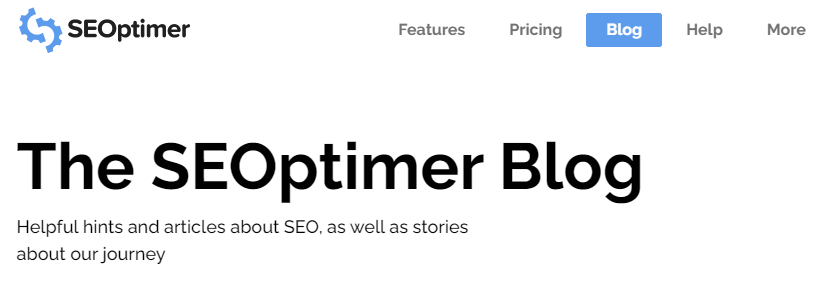
Last but not least, there’s content distribution, which entails promoting your client’s content, and driving visitors back to their site. There are various techniques that you can utilize here, including content syndication, posting on social media channels, blogger outreach, and more.
Social Media Marketing
With social media, you’re essentially posting content on your client’s social channels to promote their brand.
Freelancers can also manage a brand’s paid social media marketing which entails creating paid social media campaigns on platforms such as Facebook, Instagram, Pinterest, etc.
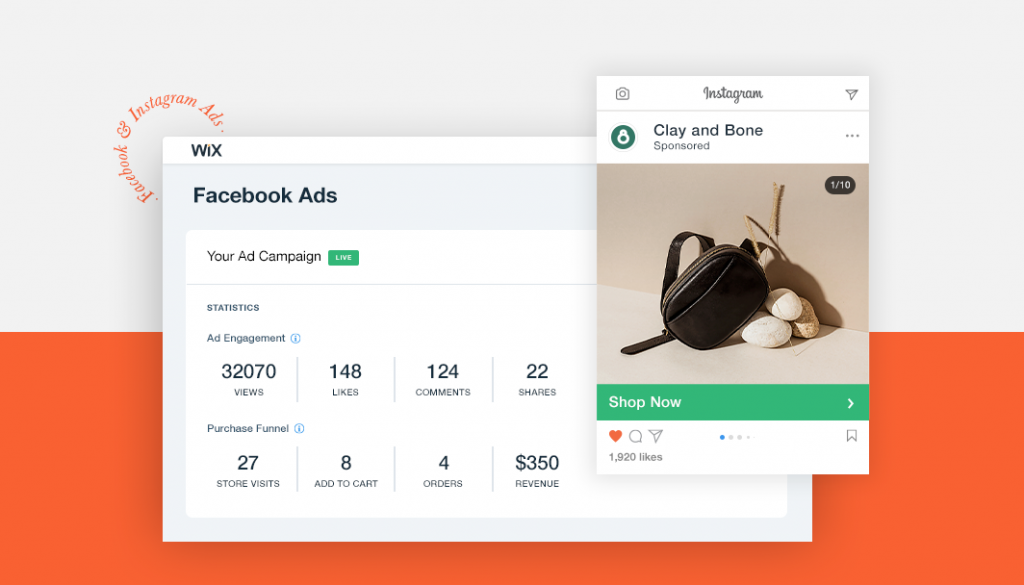
Social media might sound easy, but there’s a science to it — among other things, you’ll have to be well-versed in how to optimize your posts for maximum reach and engagement.
Search Engine Optimization (SEO)
SEO deals with getting your client’s website to rank on Google (preferably on the first page).
There’s a lot to unpack with this particular branch of digital marketing — there’s keyword research, on-page SEO, off-page optimization, link-building, and more.
Seeing as consumers are increasingly researching products and services online before making a purchase, companies are now investing more time and money in improving their SEO.
Search Engine Marketing (SEM)
Don’t confuse SEM with SEO — SEO deals with getting a client’s website to rank organically, but SEM involves increasing a client’s visibility on search engines using paid methods such as PPC ads.

PPC ads are a key part of most companies’ digital marketing strategies, and they’re particularly useful for anyone who’s looking to increase their sales and revenue within a short period of time.
Pros and Cons of Freelance Digital Marketing
Now that you’re up to speed on the different types of digital marketing, let’s discuss the pros and cons of freelancing in this industry.
Pros
First up, here are the pros:
- You have no boss
- You can decide when you want to work
- You can decide where you want to work
- Every project is different; you’ll never get bored
- You get to decide how much you earn - your pay isn’t restricted by some lame rule that says that salary increments are capped at a maximum of 5% per year.
To sum it all up, the beauty of freelance marketing lies in the fact that you can do it on your own terms, in your own way.
There are plenty of digital marketers who travel the world while freelancing.
Heck, you can work while reclining on a lounge chair in a private villa in Bali (as long as the Wifi’s decent).
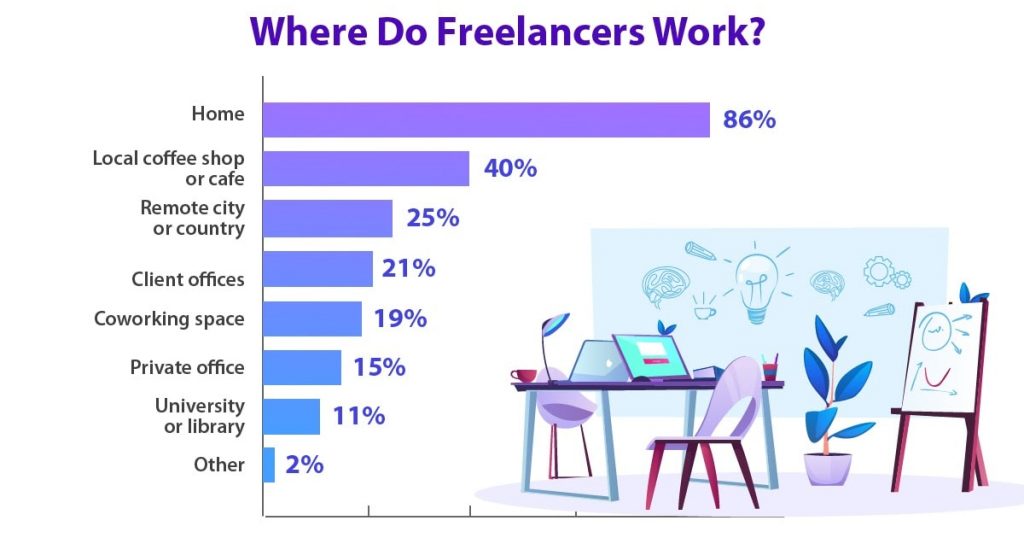 Image source: WebsitePlanet
Image source: WebsitePlanet
On the flip side, freelance digital marketing is also a great fit for, say, stay-at-home parents who want to earn some extra money. You can work from the comfort of your own home, and can scale your hours back and forth to suit your schedule!
Now, there are a million and one freelancing opportunities out there, so let’s talk about the specific advantages that you get when you’re in freelance digital marketing.
We know this is a bold statement, but we’re going to go on the record and say that digital marketing is pretty much recession-proof.
As a digital marketer, you’re in the business of driving demand — and that’s something that every business relies on to survive.
If times are tough, what do you think will happen?
Yes, your client might have to cut back on their marketing budgets, but that cut is likely to come from (non-digital) advertising and PR, not digital marketing.
After all, digital marketing allows companies to drive sales and track their ROI more effectively than other forms of marketing, so don’t worry; your job is safe.
Cons
That said, there are several cons of freelance digital marketing as well.
Competition in the digital marketing industry is stiff. Assuming you’re going to reach out to clients on freelancer platforms (more on this in a bit!), you’ll have to stand out among all the other freelancers from around the globe.
Another drawback to becoming a freelance digital marketer is you have no fixed income.
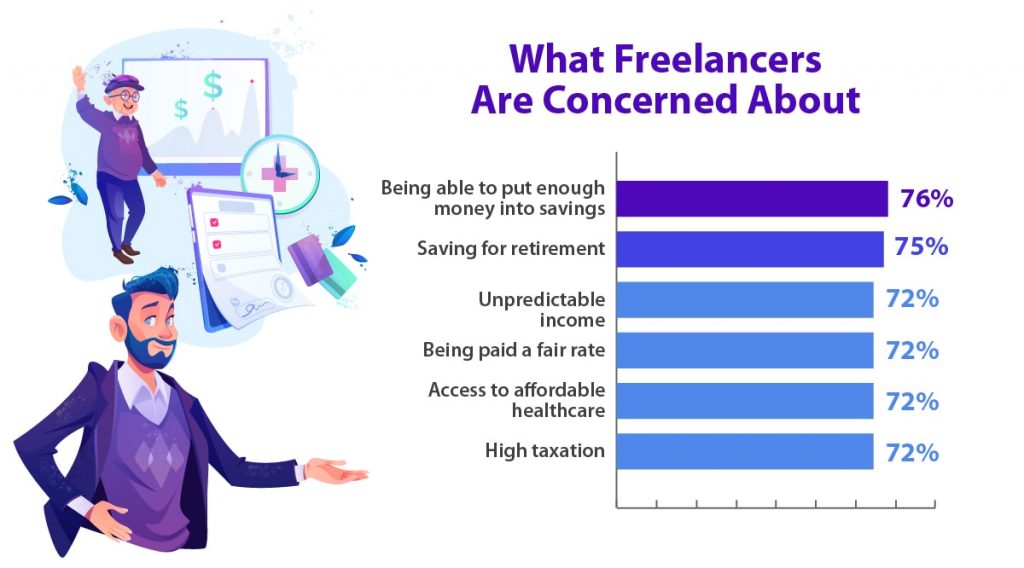
You might earn $5,000 one month, and then $500 the next. As you build your client base and get more retainer jobs, the situation should improve, but you still won’t get as much stability as you would with a regular 9 to 5 job.
Lastly, no one’s going to sponsor you to upgrade your skills.
Things change really quickly in the digital world, and you can’t rely on your company to send you for courses or workshops that will help you upgrade your skills. Luckily, there are a ton of free online resources that you can make use of.
A Day in the Life of a Freelance Digital Marketer
Say you’re freelancing on the side, and you spend weekday nights and weekends working on your freelance digital marketing assignments.
Here’s what your “day” might look like:
7:00 to 7:30 pm: Get home from work, and grab a quick bite.
7:30 to 8:00 pm: Check emails, and respond to clients.
8:00 to 10:30 pm: Work on digital marketing campaigns.
10:30 to 11:00 pm: Send job proposals to new clients.
11:00 to 11:30 pm: Bill clients and follow up on unpaid invoices.
11:30 pm to 12:00 am: Read industry blogs and catch up with the latest developments.
As you can see, the digital freelance life isn’t just about working on marketing campaigns.
There’s a lot of client work to be done — you’ll have to pitch to new clients, check in with your existing clients and give them progress updates, and handle invoicing.

Luckily, there are various tools that you can use to streamline the freelance digital marketing process and make your life easier. We’ll cover these at a later stage in the article.
Getting Started with Freelance Digital Marketing
Ready to get started with your freelance career? This 7-step guide will help you do just that!
Step 1: Manage your Expectations
Yes, digital freelance marketing can be an amazing career, but it’s not an easy road to get there, and you’ll definitely encounter challenges along the way.
Let’s talk about managing stress, for instance.
One misconception that many people have about digital freelance marketing (and about freelancing in general) is that it’s a stress-free job.
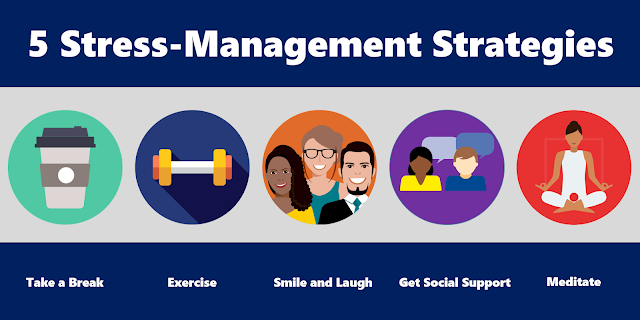
Unfortunately, that’s far from the case. While you don’t have a boss or manager breathing down your neck, you’ll still have to answer to your clients.
What happens when you commit yourself to too many things at once, then realize that you can’t hit your deadlines?
Or if your client suddenly changes the project scope, wasting days of your time?
Your work will never be stress-free, and you’ll just have to learn how to deal with these unexpected scenarios that crop up.
Last but not least, understand that it will take you some time to build up momentum; you won’t land your first job right off the bat.
It can get pretty disheartening when you’re applying for jobs every single day without hearing back from anyone — but all you can do is grit your teeth, and stick it out.
Once you build up your portfolio, and you get some testimonials on your website or online profile, you’ll find it much easier to get new clients.
Step 2: Identify your Talents and Skill Sets
In step two of the process, you’ll have to sit down and make a list of the skills you have.
Do you know how to run a PPC campaign on Google AdWords? Do you have experience managing Facebook pages? Do you know how to create an automated email campaign on MailChimp?

Image source: Reliablesoft
Next, think about other talents and soft skills that you possess.
Are you a great storyteller? Do you like problem-solving and identifying strategies? Do you have expertise in any particular industry?
Step 3: Find a Niche
Once you’ve identified your talents and skill sets, the next step is to choose your niche.
One huge mistake that many newbie freelancers make with this step? They aren’t specific enough.
For instance, many freelancers will decide that they want to cater to startups and small business owners. There are plenty of clients who fall within this category, so if you target them, this means you’ll increase your chances of landing a job, right?
Nope — it doesn’t quite work that way.
Think about it: the clients you’re reaching out to might all be small business owners, but they’re in different industries, they have different target audiences and products, and they’re gunning for different goals.
There’s no way you’ll be able to tailor your pitch to be hyper-targeted and relevant to your clients, and you’ll have a difficult time convincing them that you can do a good job of marketing their businesses.
Narrowing Down your Niche
Instead of sticking with a general niche, narrow down your niche, and choose something more specific.
You can do this by asking yourself the following questions:
- How big is the ideal client’s company (in terms of number of employees, or revenue)
- What industry is the company in?
- Where is the company located?
On top of defining your niche in terms of your target audience, do also think about the type of services you want to offer.

Obviously, your skill sets will influence what services you can offer.
If you don’t have any experience running PPC ads, for example, you can’t do Search Engine Marketing!
On top of that, consider how much time you can commit to your freelance digital marketing, and how you’d like to structure your day as well.
Examples
Here’s an example: if you want to do social media marketing or run AdWords campaigns for your clients, then you won’t be able to travel or take a break as and when you’d like.
Sure, you can schedule your client’s social media posts in advance, but you’ll still have to reply to inquiries as and when they come in.
How about AdWords campaigns?
These are also pretty “high-maintenance” — you’ll have to check in on them and optimize your ads regularly.

If you’re running ads for an eCommerce store, your client will probably run promotions during holidays and festivities, so they’ll need you to be around during these periods.
If you want to have more flexibility with your time, we recommend doing ad-hoc projects such as SEO work.
With SEO, for example, you might optimize your client’s existing blog articles or website pages to rank on Google.
Once you’re done with the project, you’re done — your client might re-engage you for subsequent SEO work, but you won’t have to keep checking in on your existing project and tweaking it.
Combine Niche and Types
Now that you’ve decided on who you want to serve, and what type of digital marketing you want to do, you’ll probably have identified a niche that’s more narrow. This might be:
- Social media marketing for FMCG brands in Asia
- Content marketing for SaaS platforms in the US
- SEO strategy for healthcare companies in Australia
Alright, time to move on to the next step of the process.
Step 4: Develop a Personal Brand
Many newbie freelancers think that the key to becoming a successful freelancer is being great at what you do.
Unfortunately, this is only part of the puzzle. Capability aside, you’ve also got to develop a personal brand, so you can stand out from all the other freelancers out there.
A great example of this is Gary Vaynerchuk, he built a popular and well-known personal brand while building his marketing agency.

Although not a freelancer, he’s a perfect example of the power of a personal brand.
Because of the popularity of his personal brand, companies who need marketing services will contact his agency because they think his agency can deliver effective results.
How do you Want your Clients to Describe you?
How do you come up with your personal brand? Simple. Just think about how you want your clients to describe you, and go from there.
Say I want my clients to think of me as someone who’s innovative and unafraid to push the boundaries. To communicate this, I might do a few things, including:
- Designing a snazzy-looking website (or getting someone to do it for me)
- Use an AI scheduling tool to set up meetings with clients, instead of doing it manually
- Make sure my proposals and pitches involve newer, more game-changing strategies rather than tried-and-tested methods
What if I want my clients to think of me as someone who has a lot of expertise, and brings a lot of value to the table? I’d probably do the following:
- Blog regularly about the latest industry trends
- Look for guest post opportunities on websites within my industry
- Write an eBook that I can disseminate to potential clients
Add Some Personality
When you’re creating a personal brand, don’t be afraid to showcase your personality.
It’s important to convey a sense of professionalism, sure, but you don’t want to come across as too “corporate” or robotic.
At the end of the day, you want your potential clients to come away from their interactions with you thinking, “Wow, this person is really cool. I’d love to offer them a freelance marketing project!”
Showcasing your personality aside, make sure you also communicate your Unique Selling Proposition (USP) with your branding.

This sounds like a fancy term, but it just refers to whatever sets you apart from your competition.
If you’ve worked in a prestigious company such as Salesforce, for example, that’s memorable, and you can use that to your advantage.
If you’re trying to brand yourself as “100% reliable” or “Never misses a deadline”, on the other hand, that won’t work.
Being prompt and adhering to deadlines is a basic requirement that all freelancers should fulfill, so it doesn’t make sense to incorporate this into your branding.
Brand Logos
Before we move on to the next step, here’s a branding-related question that we get a lot: is it necessary for me to create my own logo and freelance marketing website?
Here’s our take: creating your logo is definitely unnecessary.
It’s a nice touch, and if you can get it done quickly, go ahead by all means. But if you’re going back and forth on what your logo should look like, and you’re losing sleep over it, then just ditch it altogether.
It’s not going to impact your chances of getting digital freelance marketing assignments.
Websites
How about creating your own website?
We do recommend that you take some time to set this up — there are plenty of website builders which are both free and simple to use, and these don’t require any HTML knowledge or coding skills.

That said, it’s not important to get your freelance marketing website up and running right off the bat.
Why is this the case? Well, when you’re starting out, you’ll probably rely on freelancer platforms, and you can display your portfolio and body of work within those platforms.
Once you get more established and your clients start referring other companies to you, though, having your own freelance marketing website will definitely come in handy.
Step 5: Look for Clients
There are a few ways in which you can market your services and look for clients; we’ll go through each method in detail in this section.
First, what most freelancers do is rely on platforms such as Upwork.

Basically, this is where companies go to outsource certain tasks to freelancers.
Once you register for an account, you’ll be able to view the job ads posted by companies, send in proposals, and hopefully land yourself your first digital freelance marketing assignment.
Pros of using Upwork
- There are 5 million registered clients on Upwork, so there are a ton of freelance jobs for you to choose from.
- You can check out the profiles of your potential clients, and see what other freelancers say about working with them.
- The platform comes with features to help you track your progress and get paid. If you’re working on an hourly rate job, your clients are automatically invoiced and billed for your hours at the end of every week. If you’re working on a fixed-price job, your client has to deposit the amount agreed on with Upwork before you start. In the event that they go MIA, you’ll be able to recover the sum of money from Upwork.
Cons of using Upwork
- There are 12 million registered freelancers on Upwork (and counting!) -- that’s a lot of people that you’re competing with.
- Upwork takes a cut out of all your contracts (this starts from 20%, but it drops as you hit certain revenue milestones).
All in all, Upwork is by no means a perfect platform or solution, but it’s still a great way of connecting with potential clients, especially when you’re first starting out.
To maximize your results from Upwork, check out these resources:
- How to create a rockstar Upwork profile that attracts clients in droves
- Top 10 Upwork proposal tips: How to win Upwork jobs in 2018
- 8 surprising Upwork proposal mistakes I see every day (and how to avoid them)
- How to land your first job on Upwork
Job Sites
Freelancer platforms aside, you can also check out traditional job sites, and reach out to companies hiring for full-time digital marketing positions.
Yes, these job ads are for full-time positions, but you’d be surprised at how many of these companies are open to working with freelancers as well.

After all, when a company outsources work to a freelancer, they get to save on onboarding costs, office space, training costs, plus benefits and taxes.
If you want to give this a shot, here’s a template you can use:
Hi Team {Company Name},
Nice to e-meet you! I saw your job ad for the {Digital Marketing} position, and wanted to reach out to ask if you're open to hiring freelancers to help with your digital marketing efforts.
I'm an experienced freelance digital marketer who specializes in {skill set}. I’m familiar with {platform/tool}, and I’ve helped companies such as {Company Name} achieve {result}.
Please get in touch if you're keen to explore. Looking forward!
Best, {Name}.
www.linktoportfolio.com
Pros of Using Traditional Job Sites
- The space is a lot less crowded, and you have less competition.
Cons of Using Traditional Job Sites
- Some companies might not be open to working with freelancers.
- There’s more risk involved -- you might work on a project for a company, and then end up not getting paid. (To protect yourself, we recommend charging 50% upfront and collecting the second half of your payment upon completion of the project.)
Other platforms
Your last option is to promote your services on social networks and forums such as Facebook, Quora, and Reddit.
Now, this is a tricky one — with platforms such as Quora and Reddit, you can’t outrightly plug your services; doing so will get you banned.
What you can do, however, is to answer other users’ questions on digital marketing, and link to blog articles or case studies that you’ve published on your website or LinkedIn profile.

The goal is to focus on providing value for the other platform or forum users; assuming you do this right, you should get some potential customers enquiring about your services in time to come.
Here are some relevant resources to check out:
- How to Market Yourself on Quora Without Getting Your Account Flagged
- A Content Marketers Guide To Success On Reddit
Step 6: Figure Out How Much to Charge
If you’re new to the world of freelancing, you might get a couple of companies approaching you and asking you whether you’d work in return for exposure.
You should always reject these offers.
The only instance in which you should work for free is if it’s for a highly reputable company that you want to be associated with.
If you see that MailChimp is hiring a freelancer to manage their Facebook page, for example, there’s no harm in approaching them and telling them you’d be happy to take on the project at zero cost.
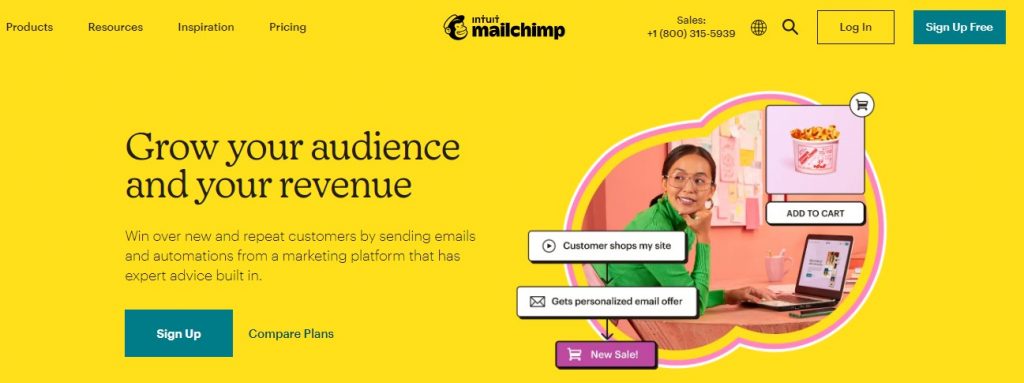
After all, if you tell your subsequent clients that you’ve worked with MailChimp, they’ll know that you’re definitely legit.
Now that that’s clear, let’s go on to talk about how you determine what you should be charging.
Look to the Market
First things first have a look at what other people are charging for similar services.
You can either check out other freelancers’ profiles on Upwork or look at postings on job boards and forums.
It’s a good idea to not stray too much from this figure, at least when you’re first starting out. After all, you don’t have much experience; your first few clients won’t have any reason to pay you a premium.

Hourly Rate
Once you have a general idea of how much you want to charge, calculate your hourly rate based on your full-time income and take that into consideration as well.
Say you’re working as a marketing executive, and you earn $3,500 per month.
Assuming that you work 8 hours per day, and you’re off on weekends, this means you’re making approximately $22 per hour.
Take this to be your baseline, and try not to price your freelance digital marketing services below this amount.
How to Charge
Now, that’s not to say that you can only charge per hour.
Other options include charging a fixed price per project or a retainer price. Let’s break down each option:
Fixed price projects
- Your client pays you a fixed price per project completed.
- Best used with projects with fixed scopes and deliverables. If you’re managing your client’s Facebook page, for example, be sure to clarify if they just want you to post to their page, or whether you have to also handle customer inquiries that come in through their page.
- If you work quickly and productively, you might earn more from fixed-price projects than hourly projects. Your clients are paying you based on the value you provide, not the number of hours you put in!
Retainer projects
- Your client pays you a fixed price per month, and they’ll reach out to you with various tasks over the course of the month. If you’re a small business marketing consultant or a freelance marketing consultant, for example, a retainer project would be a good fit.
- Your workload will fluctuate based on the client’s schedule and busy periods, but you’ll get paid the same amount per month.
- This is a great way of “locking in” a client for the long-term; that said, it’s pretty difficult to get retainer clients when you’re first starting out.
Step 7: Keep Learning
Because of the high level of competition in the freelance digital marketing industry you need to make sure that you stay on top of your game by constantly learning about your chosen industry.
This entails knowing the latest industry trends, what things to avoid doing, etc.
As a digital marketing freelancer specifically, you should constantly be reading up on the latest internet research and best practices published in relevant industry publications.
For example, if you’re an SEO freelancer then publishers such as Search Engine Journal, Search Engine Land, and Search Engine Roundtable should be added to your list of frequently read websites.
Additionally, digital marketing freelancers can take online courses to help them stay relevant and to improve their skills.

The importance of constantly learning cannot be overstated.
For example, since SEO is such a rapidly advancing field, SEO freelancers should definitely make it part of their monthly goals to enroll in or buy SEO courses to improve their skills.
BONUS: Useful Tools and Resources for Freelance Digital Marketing
As a freelance marketer, there are plenty of tools and resources that you can equip yourself with.
Some of these will help you reduce the time you spend on administrative tasks, and others will help you tackle certain aspects of your marketing projects.

To increase your productivity and supercharge your digital marketing efforts, check out these tools:
Generating leads / getting more clients
- SEOptimer's own Embeddable Audit Tool to generate SEO and website improvement related leads directly from your site
- Hotjar to help you analyze and optimize your website
- SumoMe to help you grow your email list
- Wix to create a website
Working on marketing projects
- Pixabay for royalty-free images
- Canva for social media templates
- Blog Title Generator to help you come up with headlines
- Hemingway to improve your writing
Invoicing and billing
- Bonsai to generate freelance contracts
- Harvest to generate client invoices
7 Tips from Actual Freelancers on How they Grew their Businesses
Here are a few tips and quotes directly from actual freelancers offering digital marketing services to clients.
Jon Torres

“Align your online presence with the new industry weeks, or better, months before breaking into the freelance world of marketing.
You do not have to change everything you've ever posted on Twitter, LinkedIn, or your website. But do change your bios to reflect your new focus.
Next, study up on the sector so you're prepared to offer the right solutions. Then start sharing insider or expert-level tips, hacks, success stories, top players, emerging trends, and bust myths about your new industry several months before you pitch or approach prospective clients.
Participate in focus groups in the new industry, not just to prepare yourself for the change you are working on, but also to network, gain social proof, and to learn what's emerging in freelance marketing. Depending on how fast you're able to adapt to the new, reach out to potential customers with ideas, social proof, and enthusiasm to work with them.”
Claire Jarrett

“I recommend finding a way to automate your marketing. So many people these days preach creating consistent content - I believe exactly the opposite to be true.
For example - using blogs combined with building your email list and then targeting subscribers with automated email sequences (you don't have to write the blogs unless you want to - instead find a writer to help you so you can concentrate on what you do best).
Next - for just $5 per day, you can add in basic remarketing campaigns meaning you'll always be top of mind for prospects. And of course, make sure you're focusing on SEO in an automated way - hire someone to help you and pick a handful of high intent keywords that will bring in qualified leads.”
James Taylor

“As an SEO freelancer, my biggest advice is to not get obsessed with just one marketing channel.
For example, my day-to-day is in SEO and content, so naturally for the last few years that has been my focus when it comes to marketing my SEO services.
I've actually found that YouTube and TikTok are incredible in reaching a new and relevant audience and that these platforms have truly opened up my world when it comes to a) business marketing and b) new service and product offerings that 'fit' each platform much better than they do from traditional content and SEO.”
I'd urge any marketing freelancer to properly audit YouTube and TikTok to see how you can provide value on those platforms that are different to your current marketing efforts.”
Gareth Cotter

“When targeting an individual company, I have found a personal approach to be very effective. First, I'd use LinkedIn to find the key decision-maker at the company. I'd then send a personalized letter, signed by myself briefly outlining why I believe they are missing out on a particular marketing opportunity, which I've identified.
I'm also clear to point to case studies, clients I've worked with, and highlight any social proof to ensure they feel confident they are dealing with a professional.
I end the letter explaining I have produced a short 10-minute presentation to run by them,
I also include a £5 Starbucks/Costa Coffee voucher, this leans on Robert Cialdini's reciprocity principle in which he suggests humans are hardwired to return favors. I also believe this to be true and have seen great success from this personal approach.”
Ross Kernez

“My top tip for growing a business is to assemble webinars.
As the owner and founder of SEO Meetup, I organize webinars and offline events to share what I know with a community of people curious or interested in SEO.
I provide my expertise and educate others with the information I retain and as a result, I create lasting impressions with this strategy, I also generate leads.
Running webinars can help you with understanding your audience, choosing the right platforms, setting up and scaling campaigns, and most importantly, analyzing and testing everything you do.”
Ryan Scollon

“My top tip for generating new business leads is to build a website and get it ranking at the top of Google for your desired keywords.
When I first joined the world of freelancing, most freelancers would tell me that they got new work via the likes of Linkedin and referrals. But I wasn't particularly active on social media and I didn't have an existing network that I could rely on for referrals.
3 years since going freelance, I still feel that the big advantage I have over most freelancers is that my website ranks well for various freelancer and consultant search terms, which helps drive several leads a week.”
Michael McGovern

“My #1 tip for finding new clients: Join paid online communities.
Whatever role you have in marketing, there's likely a group of people online that share knowledge and job opportunities. These can be Facebook groups, Discord chats, private forums, etc.
Yes, you'll have to invest a little bit of money...
But you'll likely see exclusive job opportunities not posted publicly, the chance to network with influential people, and your future clients will have confidence knowing you invested in yourself to be there.
This is how I got most of my current clientele and referrals.”
A Final Word on Getting Started with Freelance Digital Marketing
You’ve made it all the way to the end of this bumper guide, and you’re now an unofficial expert on how to start a freelance business (especially one in marketing).
We don’t want to sugarcoat things — there are tons of freelance marketers out there, and it’s not easy to stand out in this crowded space.
That said, as long as you bring something to the table, and you’re willing to learn new skills, there’s nothing stopping you from doubling or even tripling your income, simply by taking on freelance digital marketing work.
Remember, the key is to offer your clients something that’s truly valuable to them, and to persevere instead of quitting early in the game. Best of luck!




